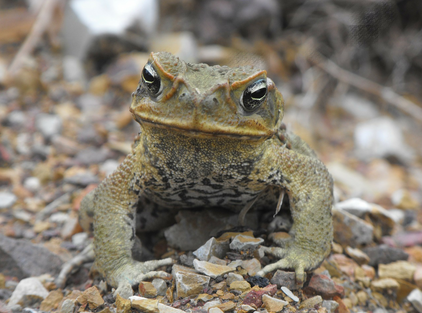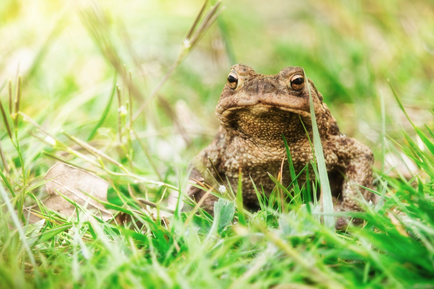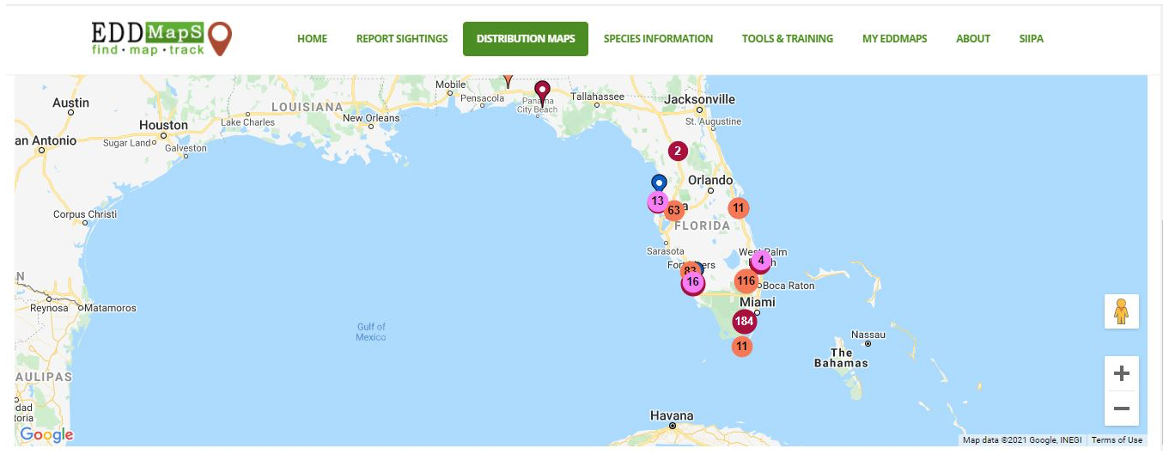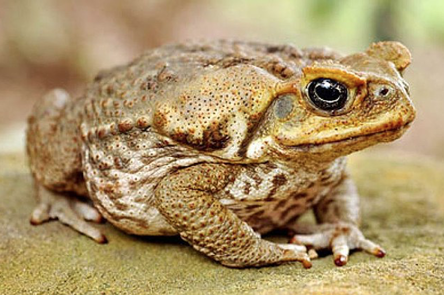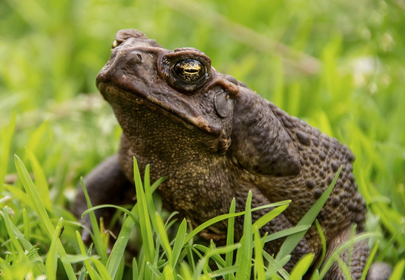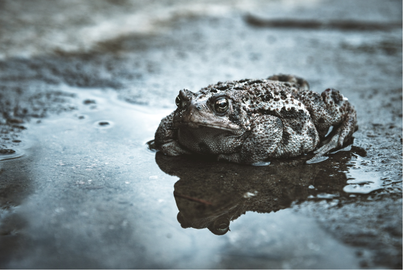 Photo by Jaunathan Gagnon via Unsplash Photo by Jaunathan Gagnon via Unsplash The cane toad, exotically known as Rhinella marina, is a large, non-native amphibian introduced into Australia in 1935. Native to South and Central America, Giant toads are viewed as invasive species in Florida and Australia. They are poisonous to animals that try to devour them. Not every non-native species introduced in a new region is invasive. They are labeled as invasive only when they compete with native flora and fauna for resources and alter or damage the ecosystem. Cane toads are invasive as they outnumber the native fauna with their breeding and insatiable appetite. Cane Toad Color and SizeThe warty amphibians come in a range of colors. They may be olive-brown, reddish-brown, grayish-brown with pale-yellow or beige-colored bellies and dark mottling. The adult cane toads are 15cm long on average (range from 6inches to 9inches in length). Female cane toads are even more giant than male cane toads; the largest female measured was 24 cm long. Grown-up cane toads are larger than the native southern toads that only grow to 4 inches. Cane Toad Adaptations and DietThe cane toads are hefty, accommodating, and noxious throughout their life cycle. The desiccation-resistant toads can tolerate extreme temperatures around 40 degrees Celsius. The fat, plump amphibians are carnivores at a young age but develop into omnivores as adults. They can eat anything that has a distant relation with food, be it vegetation, insects, lizards, smaller native toads, native frogs, snakes, little birds, and carrion of other mammals. They are even attracted to food left in your backyard and scraps of human food on the table. Adult cane toads may even nosh on cane toad eggs. Living insects as beetles, honeybees, ants, and bugs are their favorite food. Because of this, they are creating food stress for insectivores within the ecosystem. Cane Toad Habitat RangeThe goliath toads are native to the United States, ranging from the southern United States to Central America and tropical South America. They are found in a wide range of habitats. In Australia, their range extends from dunes to rainforests. They have profusely burgeoned because of the few native predators, therefore, they have less competition for food and space in yards, ditches, canals, and ponds. Cane Toad introduction to Australia Beat Cane BeetlesAbout 100 cane toads were imported from Hawaii to north Queensland, Australia, in 1935 to control sugarcane beetles, pests to sugarcane crops. The larvae of the French’s Cane Beetle and the Greyback Cane Beetle damaged the roots of sugarcane. The beetles are native to Australia. They are harmful to sugarcane crops, which are a main source of revenue for Australia. Adult cane beetles eat the crop’s leaves, and hatchlings feed on the roots. They have a large exoskeleton. Their eggs and larva are always laid to rest underground, making them difficult to destroy. Those 100 cane toads that were released in a sugarcane plantation swelled in number to 3,000. Their adaptive and edacious nature that initially attracted farmers led them to conquer eastern and northern Queensland. In 1964, they came across in the Gulf of Carpentaria. By 1978 they had entered New South Wales. In 1984 they had arrived at the Queensland/Northern Territory border. In March 2001, cane toads immigrated to Kakadu National Park, and by 2009 the horde is marching to the cooler areas near the western Australian border. Both never crossed paths, for beetles don’t dwell near the ground, and cane toads are active at night. Completely forgetting about the beetles, cane toads diverted their attention to native insects. Insects are attracted to light at night, thus, they found ideal habitats under pipes, in ditches and ponds. A failure at gobbling beetles, the species population has mushroomed considerably in numbers from the initial 3,000 cane toads to over 2 Million and counting. In addition to Australia, they’re also found in south Florida. They were introduced in Florida in the 1930s. But an accidental release of 100 cane toads by a pet dealer in 1955 and 1960 has wrecked havoc, as reported by The Washington Post. Today, they are abundantly present in urban, suburban, and agricultural areas. |
|
|
(833) CMS-LINE
(833) 267-5463 PO Box 13477 Mill Creek, Wa, 98082 © Conservation Made Simple. All rights reserved.
501(c)(3) Non-Profit, Tax ID#: 82-1646340 Copyright © 2021 Conservation Made Simple |

